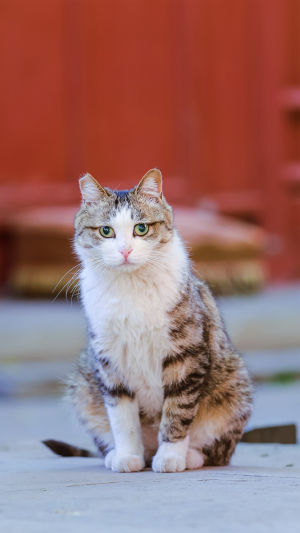If you love cats and want to keep one at home, here are some tips on cat essentials to help you care for your feline friend.
What are some common household items for cats?
1. Cat litter box: This is where your cat will go to the toilet. You can choose from semi-enclosed, fully enclosed, or fully automatic litter boxes. Some cat parents prefer to use paper boxes or basins. If you have more than one cat, it's a good idea to have multiple litter boxes to prevent cross-infection if one cat gets sick.
2. Cat litter: This is the material you use to fill the litter box. You can choose from tofu cat litter, bentonite cat litter, mixed cat litter, or wood shavings.
3. Cat climbing frame: This is a place where your cat can practice clawing and climbing. Choose a size that is appropriate for your cat's needs, and consider getting a variety of types to keep things interesting.
4. Cat scratching board: This is a great way for your cat to practice clawing, and can also serve as a place for them to go to the toilet. Some cat parents even choose cute and decorative scratching boards as a fun addition to their home.
5. Cat food: There are many types of cat food available, and what you choose will depend on your cat's age and dietary needs. For cats over three months to one-year-old, choose kitten food. For cats over one-year-old, choose adult cat food.
6. Cat toys: There are many types of toys available, but cats tend to get bored quickly, so it's important to choose toys that are dynamic and engaging. Teasing sticks, infrared toys, and small fur balls are good options.
7. Cat supplies storage rack: When you bring a cat home, you'll likely have a lot of supplies to keep track of. A storage rack can help you keep everything organized and easily accessible.
8. Cat nail clippers: To prevent your cat from scratching you or your furniture, it's a good idea to trim their nails regularly. However, be careful not to cut too close to the quick (the red line in the nail), as this can cause bleeding.
9. Cat comb: Regular grooming with a cat comb can help prevent shedding and keep your cat's coat looking healthy.
10. Cat food and water bowls: Choose ceramic bowls for non-automatic feeding, as they are more durable and hygienic. For automatic feeding, consider a wifi-enabled bowl that can be controlled remotely. It's important to keep your cat's food and water bowls clean and replace them as needed.
11. Fully sealed food storage container: If you have a lot of cat food, you can store it in a sealed container to prevent it from getting moist.
What are some common types of cat food?
1. Cat food: Choose high-quality cat food, especially milk cake food for young kittens. You can find tips on how to choose good cat food online.
2. Nutritional cream: This can help enhance your cat's physical fitness and supplement their nutrition.
3. Canned cat food: Choose high-quality canned food as a main source of nutrition for cats over three months old.
4. Cat freeze-dried food: This can be a good source of nutrition for cats over two or three months old.
5. Cat milk powder: Choose goat milk powder, and mix it with warm water for supplementation. This is especially important for kittens under two months old.
5. Water: Make sure your cat has access to clean water at all times and replace it regularly.





